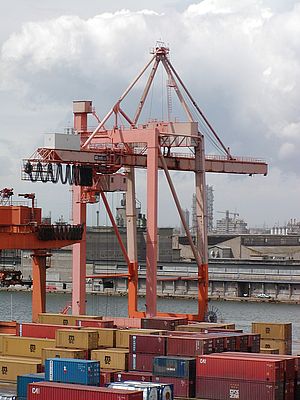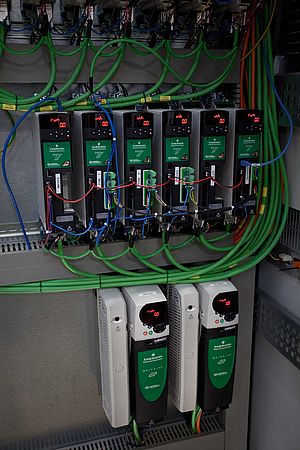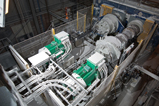At Felixstowe, the UK’s largest container port, the search for greater energy efficiency has led to investment in an RIS.GA. system for diesel saving on 12 rubber tyre gantry cranes (RTGs).
The Port of Felixstowe provides customers with a continuous quay of over 2.3km, is equipped with 27 ship-to-shore (STS) gantry cranes, and has a further 730 m of quay and five more STS gantry cranes coming online this year. When completed, the reconfiguration of the southern part of the port will further enhance Felixstowe’s position as one of the leading container ports in the world.
The search for greater energy efficiency has led them to investt in an RIS.GA. system for diesel saving on 12 rubber tyre gantry cranes (RTGs). With a recent assessment of diesel usage confirming savings of up to 25% per crane, the investment in the RIS.GA. system is expected to give a return on investment (ROI) of well under three years. Ever increasing diesel prices, and the new carbon tax, combine to make the savings very significant.
Diesel generators onboard RTGs and mobile harbour cranes (MHCs) usually run at constant speed to provide the drive system and auxiliaries with a constant supply voltage regardless of whether the crane is in operation or stand-by. RIS.GA. from Control Techniques is a drive-based system that manages the diesel generator, allowing its speed to be reduced during stand-by, whilst maintaining essential power for auxiliary and safety equipment.
The dedicated container terminal at the Port of Felixstowe handles over 3 million TEUs (twenty foot equivalent units) per year and over 40% of the UK’s import and export trade passes through the port. The container storage area is served by a fleet of 74 RTGs and is currently undergoing further development, hence the need for the new cranes.
The 12 RTGs fitted with the RIS.GA. system are rated at 40 tonnes under the spreader, have a hoist speed of 50m/min, a trolley speed of 70m/min, a gantry speed of 140m/min and each is fitted with a 670kVA diesel generator. Each RTG will complete around 100,000 moves per year.
Control Techniques was already quoting the Port of Felixstowe authorities for drive retrofits, and was able to present a convincing case for installing their RIS.GA. system, estimating an ROI of 2 to 3 years.
Analysis of the RTG oil samples indicates that periods of idling have not been a problem and that savings have been very substantial, varying with duty up to around 30%, though generally averaging at about 25%. The RIS.GA. software, pre-loaded onto a 37kVA Unidrive SP AC drive, is set to allow the diesel generators to run on for a minute before initiating run down to tick-over speed. At tick-over, the diesel generators produce 300V, which is boosted by the drive with RIS.GA. up to the 415V required for operation of the auxiliary equipment. When required, the diesel generator will run up to operational speed in 5 seconds.
The RIS.GA. system is very compact, and all twelve were supplied fully wired, assembled and ready to connect in an IP65 protected stainless steel cubicle. Each is fitted above the electrical house of its crane. Control Techniques delivered each one when it was convenient to the Port of Felixstowe’s Engineering Department and carried out all of the electrical installation and programming. As it is a static electronic system, it requires little or no maintenance.
RIS.GA. has been applied successfully on RTGs and MHCs throughout the world and is saving fuel on cranes manufactured by ZPMC, Kalmar, MGM-OMG, Doosan and Fantuzzi Reggiane. In many cases savings can be as much as 50% with an ROI as short as one to two years, depending on local oil costs. Proven reduced wear and stress extends the working life of the diesel engine, generator and electrical auxiliaries.

























